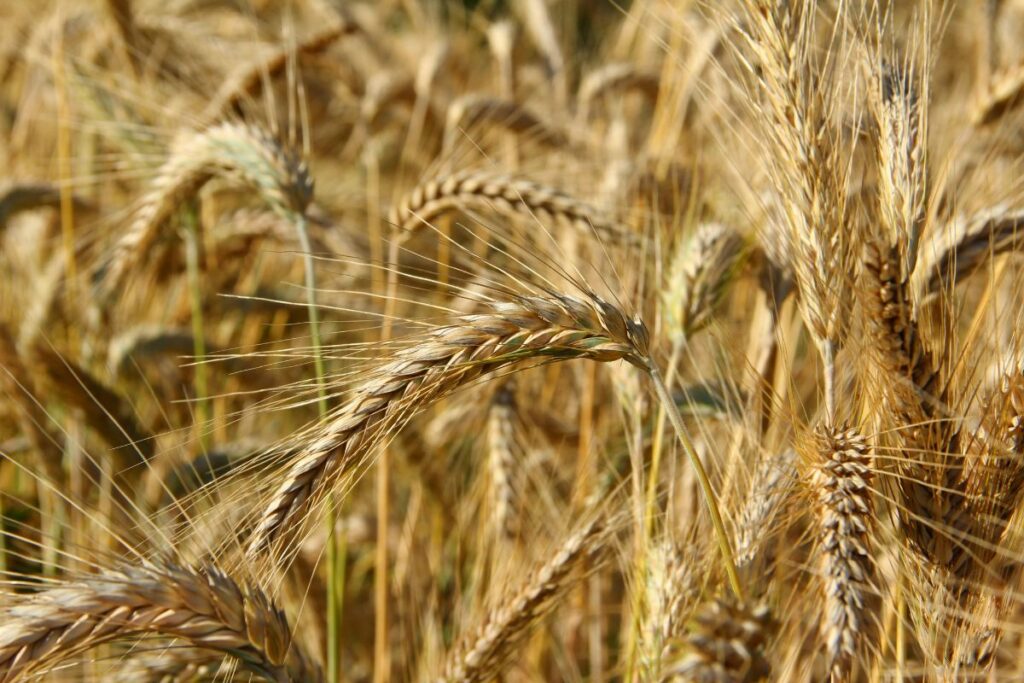You may have heard of triticale, but what is it exactly? Well, it’s a hybrid of two cereal genera. That is, the male rye and female durum wheat.
Combining these two plants led to the supercereal known as triticale! Not only does triticale have a high grain quality, but also has a high tolerance for disease like rye and is able to grow on dry, cold soils.
While you can commonly find triticale at homebrewing stores – where people use it to add flavor to beer – it’s a little bit more difficult to find in other markets.
However, it is being incorporated into more commercial breakfast cereal and bread brands, and you can purchase it as a sprouting grain.
But what does it taste like? What is the consistency, and can you use it for baking? Read on to find out!
What Does Triticale Taste Like?
As its origins would suggest, triticale tastes like a combination of rye and wheat. Meanwhile, triticale flour is a great alternative for whole wheat in terms of flavor.
When it’s germinating, triticale gives off a mild, peach-like taste that makes it amazing for beers. In fact, brewers commonly express that triticale gives their beers the earthy, spicy flavors of rye but without the bitterness.
Meanwhile, their sprouts have been found to be sweeter than wheatgrass.
Is Triticale Healthy?
Triticale has around 13% protein, similar to wheat. It is a great source of magnesium, manganese, phosphorus, and a variety of B-group vitamins such as folate and thiamin.
Triticale can also improve metabolic activity, circulation, and lower oxidative stress. As triticale is a hybrid of wheat and rye, it is not recommended for these with Celiac disease or wheat allergies.
Where Does Triticale Come From?
Triticale originates in Scotland, an area that is more known for growing rye and oats because of its colder climate.
As triticale was bred to survive in dryer, colder soils than most wheat, triticale is commonly grown in Poland. Belarus, France and Germany also produce triticale.
Triticale was the first crop whose origin and whole 140-year evolution were totally overseen by humans.
While it was first created in Scottish science labs in the early 1870s, it took nearly 100 years for triticale to become a crop that was commercially viable.
Producing the crop was initially difficult, but by the late 1960s scientists were able to create an affordable, nutritious and strong form of triticale.
How Do You Prepare Triticale And What Should You Pair It With?
Since triticale flour has less gluten in it than wheat, when using it for pizza or bread recipes it needs to be mixed with wheat flour to achieve a chewy texture.
Other than that, you can use triticale anywhere in place of whole wheat flour, such as flapjacks, quick breads, scones, and spice cakes.
Triticale has a slightly sweeter flavor that makes the whole grain a great fit for dried fruits, honey, maple syrup, and nuts.
What Diets Are Compatible With Triticale?
Paleo Diet

The aim of the paleo diet is to adopt the diet of stone-age humans, placing an emphasis on meats and wild plants that are as close as possible to what ancient man would have eaten, so refined sugar, processed oils, and dairy products are no-nos.
Many followers of the paleo diet also avoid grains so theoretically, triticale would not be suitable for a paleo diet.
Mediterranean Diet
The aim of this diet is to closely follow the diet of those who live along the Mediterranean coast. In particular, eating fresh fruit and vegetables, as well as fish or seafood twice a week.
This diet also requires cutting down on poultry, red meat, and sweets. Triticale is compatible with this diet.
Gluten-Free Diet
A gluten-free diet is exactly what it says on the tin, it’s a diet that involves cutting out gluten. While most people with a gluten-free diet do so because of health conditions like Celiac disease and wheat allergies, some people also eat a gluten-free diet for the health benefits. Triticale is technically not compatible with this diet.
Macrobiotic Diet
While there are many types of macrobiotic diets, they usually put an emphasis on natural, whole foods that are grown organically and locally.
Fruits, legumes, nuts, seeds, vegetables, and whole grains are an important part of the diet. Dairy, eggs, poultry, processed meats, and red meats are not part of the diet. Triticale is a great addition to a macrobiotic diet!
Acid Alkaline Diet
The goal of this diet is to restore our bodies’ slightly alkaline state, which is said to be the ideal state for our bodies to be in.
This diet places an emphasis on almonds, fruits, lentils, soy products, sprouted grains, and vegetables.
The goal of this diet is to have a balance of 80% alkaline foods and 20% acidic foods. Triticale flour is slightly acidic, and would be appropriate for an acid alkaline diet.
Low-Carb Diet

As the name would suggest, this diet concentrates on cutting down carbohydrates to help you lose weight.
The idea is that by avoiding high-carb foods like bread and pasta, and eating low-carb foods like high fiber fruit and vegetables instead, your body will enter a state of ketosis and you will lose weight.
Triticale can be eaten in this diet, but in very small quantities.
Atkins Diet
The Atkins diet is a popular diet that is low in carbohydrates. It takes the emphasis off calories, and instead encourages monitoring and cutting down on your carbohydrate and sugar intake.
But according to Dr Atkins, cutting down on our main energy sources will help you burn off fat. Like a low-carb diet, triticale can be enjoyed in small quantities.
Benefits Of Triticale
May Help With Managing Diabetes
For people diagnosed with diabetes – and for those who are at risk of developing it – triticale has many benefits.
Triticale’s high fiber content helps to balance out blood sugar levels, which is one of the main issues that diabetics deal with.
While the bloodstream can be easily packed with glucose and simple sugars that can cause big problems for diabetics, fiber can help you avoid this.
May Help With Digestion
Triticale is an essential source of fiber, which can make it an effective digestive aid. Dietary fiber can bulk up your stools, help food pass through the digestive tract faster, and make the absorption and excretion process quicker.
This eliminates any toxins in your bowels quicker, and makes nutrient absorption more efficient, giving you more space for food.
Diets that are high in fiber might also reduce bloating, constipation, cramping, diarrhea, and other gastrointestinal conditions like gastric ulcers which is a very serious condition.
Final Thoughts
If you’ve never heard of triticale before, we hope this article has educated you on the benefits of triticale, both for your health and how it can be a great alternative to different types of flour!
Triticale may not be suitable for some diets, but it can still be a great addition to many.
Triticale can also give a unique flavor when using it to bake bread, and can improve your digestion, circulation, metabolism, and even help with diabetes management.








